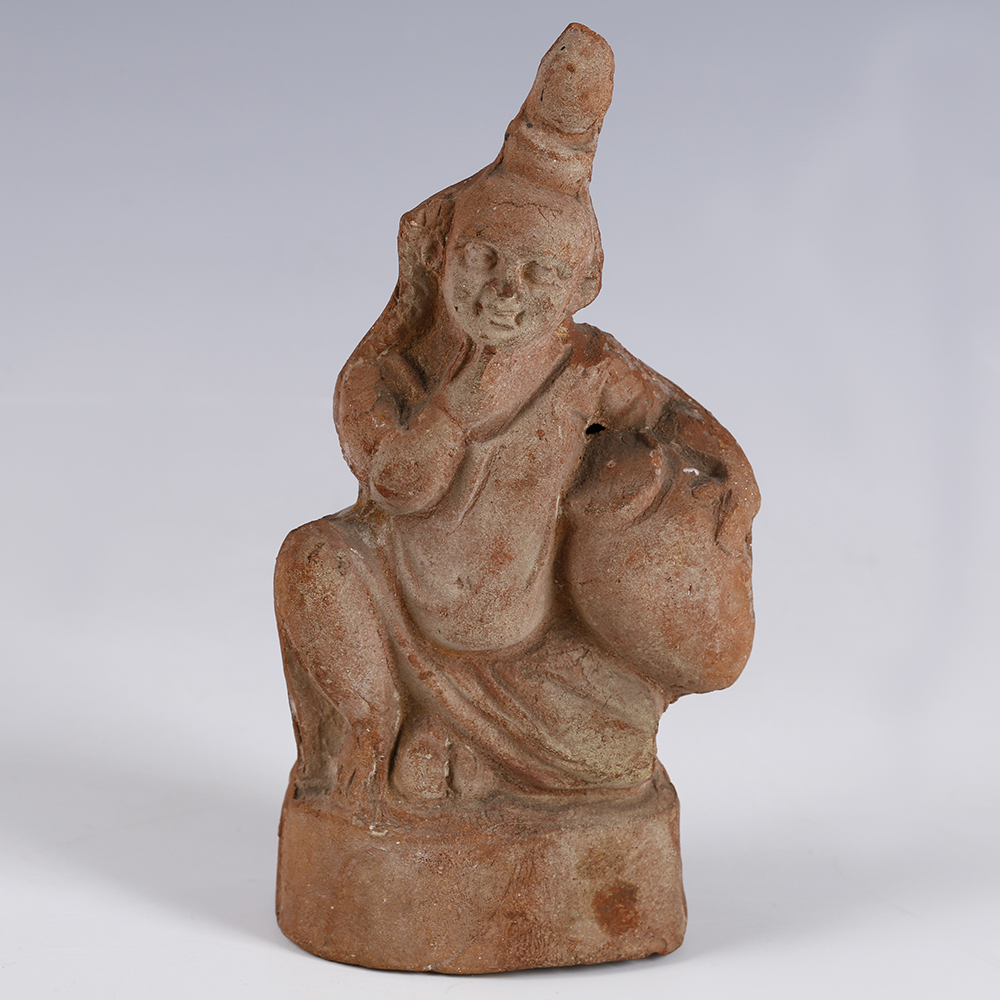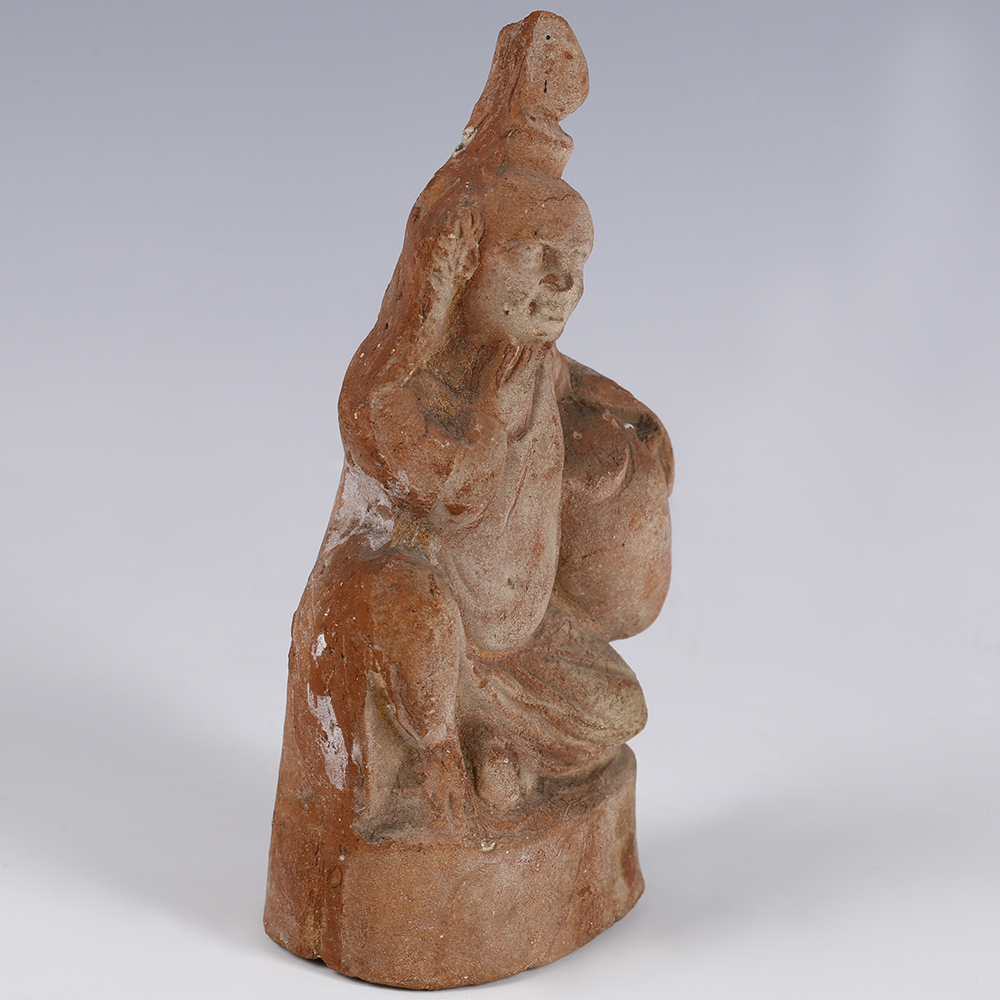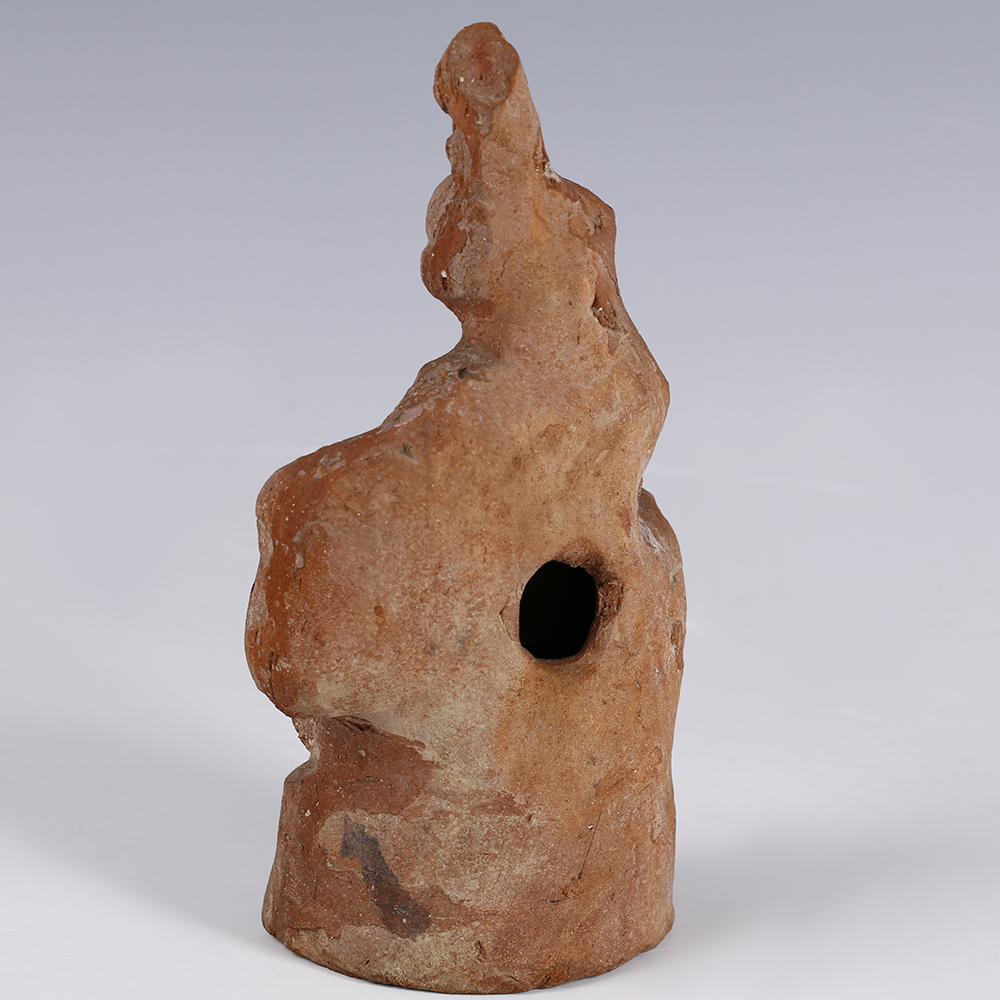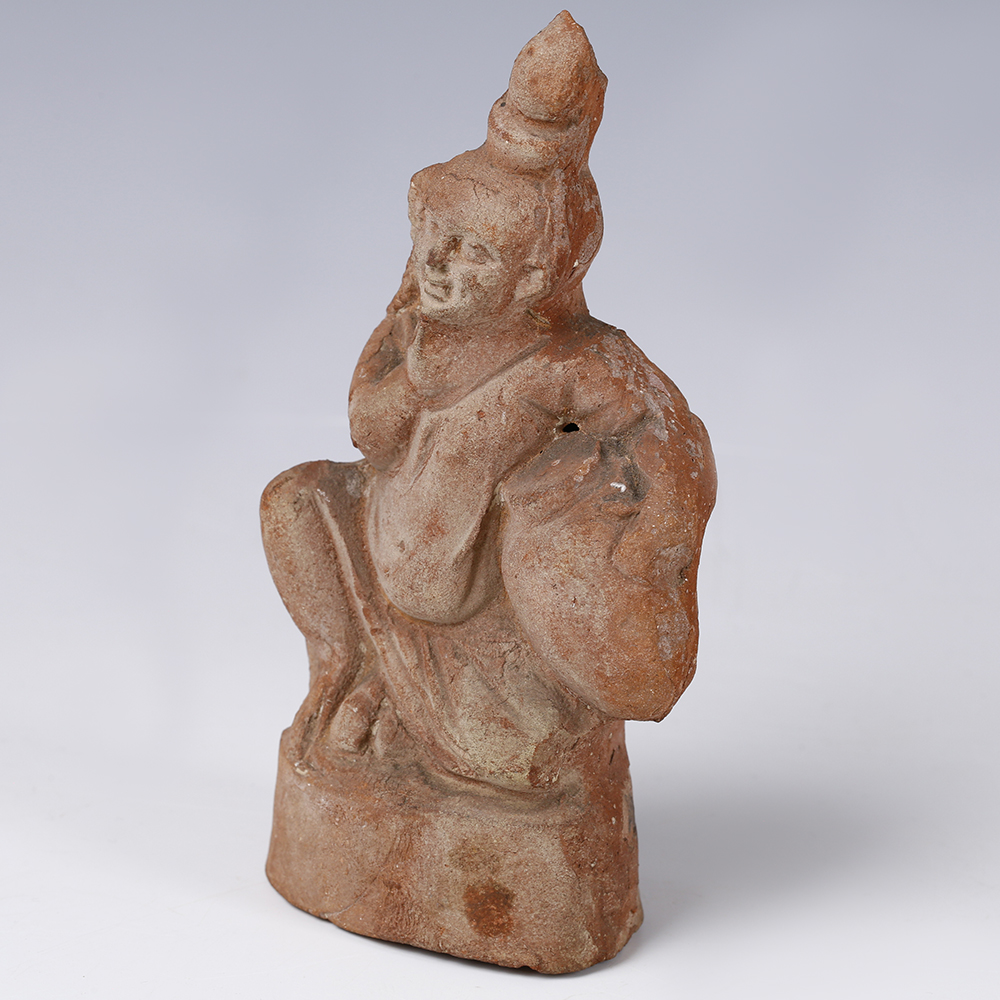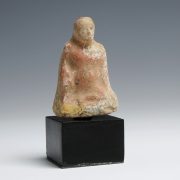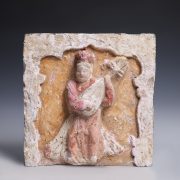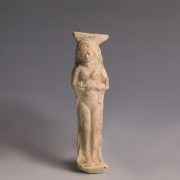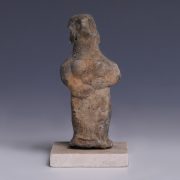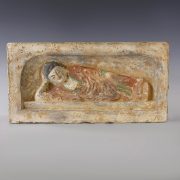In Ancient Egyptian culture and mythology Harpocrates, Harpa-Khruti (Horus the Child), was the son of the goddess Isis and her husband Osiris. The deity was often depicted as a small boy, with a sidelock of youth and the index finger held to the lips or the chin, a typical Egyptian gesture symbolising childhood and also the Ancient Egyptian hieroglyph for “child”. However, the gesture is also linked to the action of eating porridge, which was one of the traditional children’s food in Ancient Egypt. The deity was later adopted by the Greeks and the misinterpretation of the gesture of the finger to the lips led to the association of Harpocrates with silence, hence making him the god of silence, secrets and confidentiality in Ancient Greek and Roman mythology.
This statuette is a beautiful example of the cultural and aesthetic syncretism which was common in antiquity across the Mediterranean regions. It was perfectly accepted in the Ancient World that other deities could exist and that they had no less legitimacy than those in one’s territory. Harpocrates is an example of an Egyptian god adopted and adapted by the Greeks and the Romans. The Egyptians themselves could worship deities who did not originally belong to their own culture: for instance, Astarte, the warrior goddess from Western Asia, was said to come to protect the pharaoh in battle.
To discover more about religous syncretisms in Antiquity, please visit our relevant blog post: Religious Syncretisms in the Ancient Mediterranean Region.
